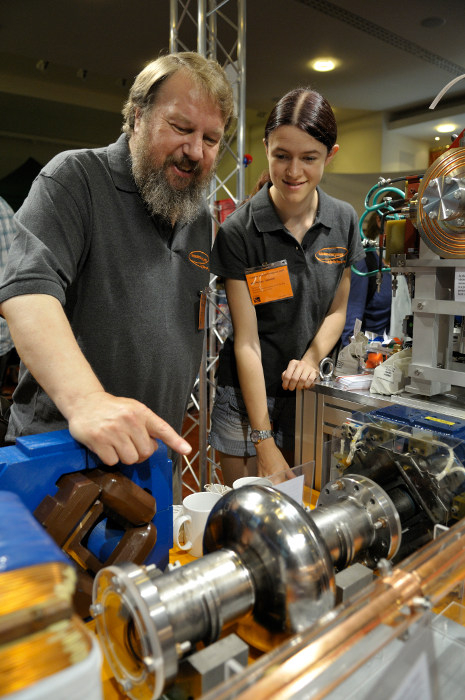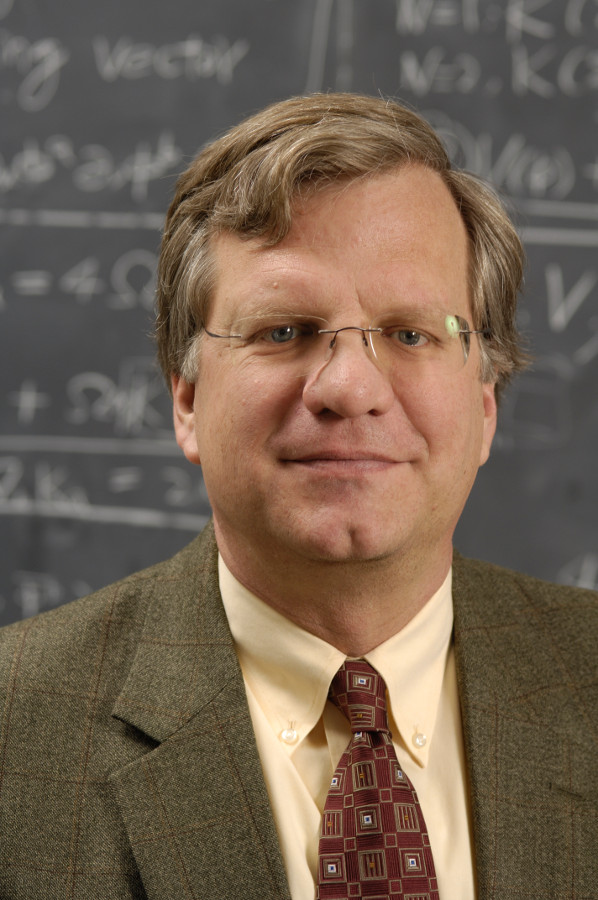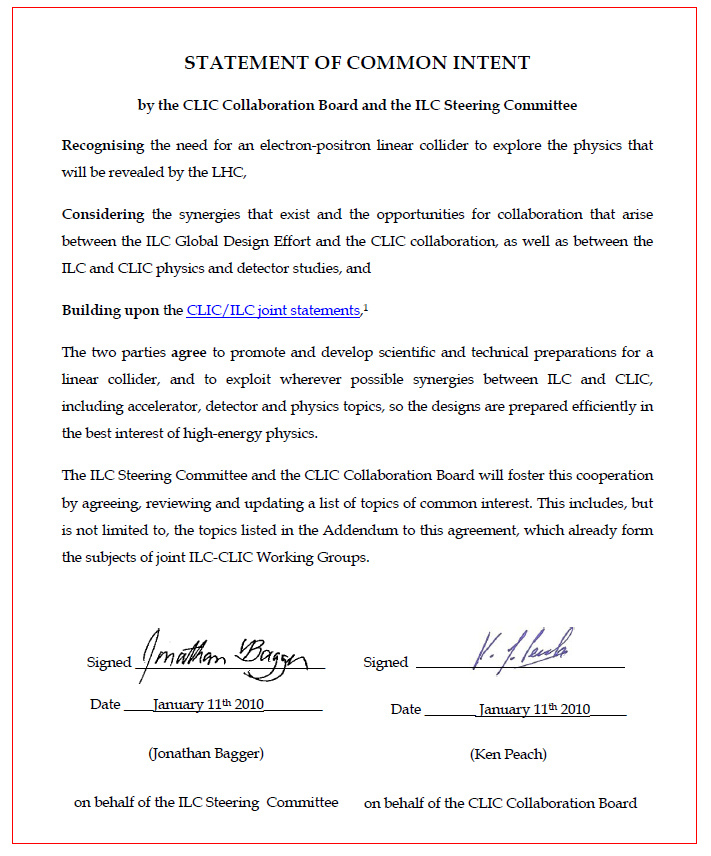Director's Corner
4 February 2010
 Barry Barish |
Formalising and extending the ILC-CLIC collaboration
The ILC-CLIC collaborative work has become an important element in our activities. In addition to the technical interchange and joint work through seven working groups, we held a Global Design Effort Executive Committee meeting at CERN last June and will organise a large joint workshop next autumn. Our collaborative activities have reached a level where it has become important to formalise the arrangement, which has now been achieved through a joint statement signed by Jon Bagger, Chair of the International Linear Collider Steering Committee (ILCSC), and Ken Peach, Chair of the CLIC Collaboration Board. This brief statement is broad sweeping in that it is an agreement to work together towards a future electron-positron linear collider through collaboration on both scientific and technical issues.
In general, I do not like formalising scientific and technical collaboration any more than is necessary, however the long and torturous path towards a next major accelerator project is so complicated that some such steps can be important and very helpful. We all understand the huge challenges that lie before us to secure a new major global accelerator project. To succeed, we will need unconditional and enthusiastic support from the high-energy physics community, solid backing from scientific colleagues in other disciplines, partnering of the funding agencies around the world, and last but not least, a public that believes in this adventure.
One cannot help but wonder whether this can actually be achieved in today's (or tomorrow's) world? My personal belief is that if the energy-frontier science to be discovered at LHC turns out to be as rich as we anticipate, we will have a strong case and our chances are good. I take it as a given that there will be more basic science projects in the future that are of the scale of LHC and ITER. Based on science potential, a linear collider should be very competitive when compared with other potential future such investments in other areas of physics or astronomy.
 Ken Peach, CLIC Collaboration Board Chair Ken Peach, CLIC Collaboration Board Chair
|
 Jon Bagger, International Linear Collider Steering Committee Chair Jon Bagger, International Linear Collider Steering Committee Chair |
At the present time, our most important task is to do our best to develop a project to propose that can best scientifically complement the LHC. There are potentially three competing technical approaches: the ILC, which is based on superconducting radiofrequency acceleration, CLIC, which is based on a normal-conducting two-beam concept, and the Muon Collider, which is based on capturing and cooling muons originating from pion decay in a collider ring. Of these options, the ILC is by far the most mature and is the practical choice for such a machine, unless the LHC strongly points to the need for higher energies.
There are many synergies we can pursue between CLIC and the ILC that will directly benefit both projects. In addition, through these collaborations we can help lay the groundwork for any future comparisons that may be needed to make a decision which technology to pursue. In that respect, along with this formal agreement, I note that we have also recently formed a new joint working group that we have given the innocuous name "General Issues" group. This group has recently come together to address many of the joint issues touched on above. In a future column, I will discuss how this group can facilitate some of the joint goals stated above.
-- Barry Barish
